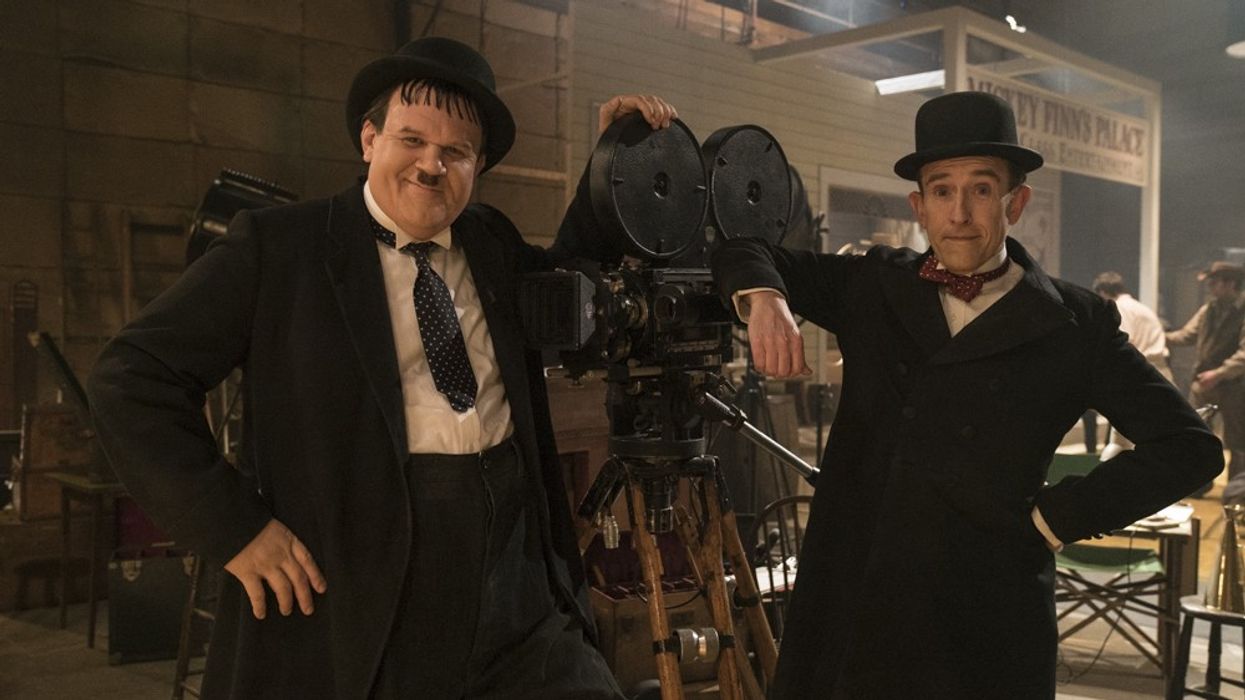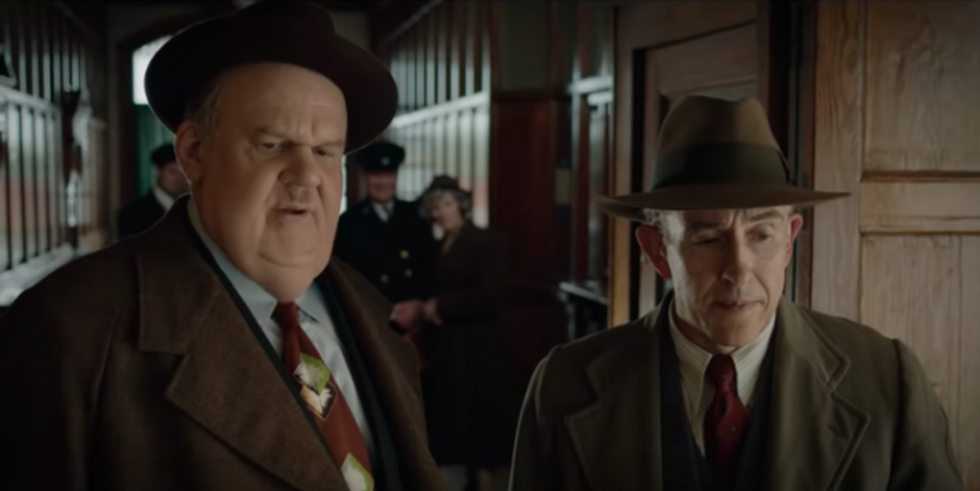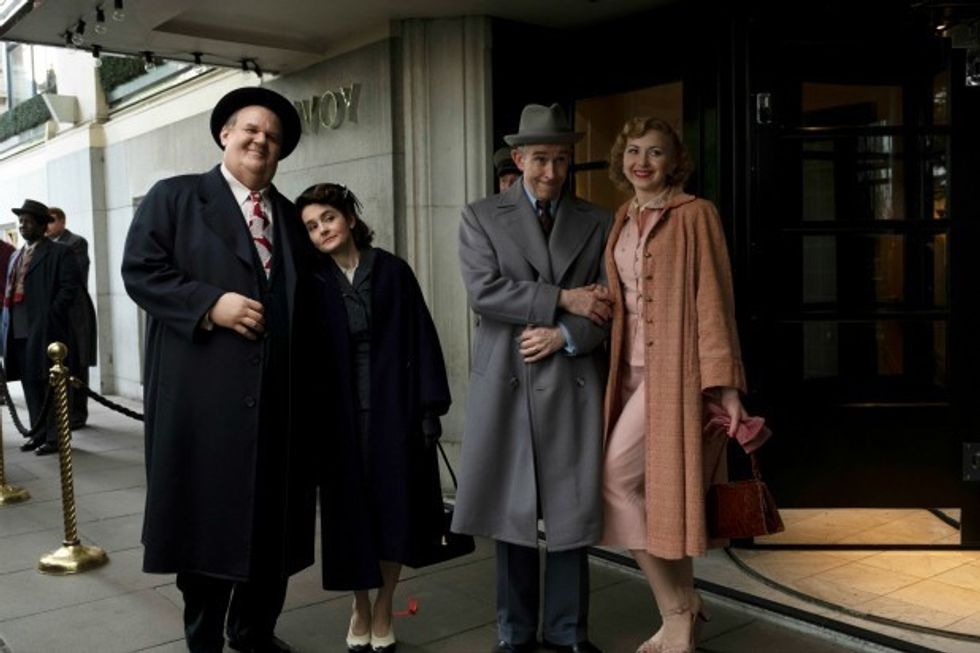How Director Jon S. Baird adapted the story of Laurel & Hardy for ‘Stan & Ollie’
Remembering the legacy of two comedy legends.

Biopics feel like a dime a dozen around the end-of-the-year, Oscar season rush. It’s an impressive feat to stand out from the crowd of so many contenders. Jon S. Baird’s bittersweet ode to friendship and showbusiness aims to do just that.
Stan & Ollie finds the dynamic duo in their older years, when they struggled to fill theater seats and scrounge up funding for one last film together. But in addition to the “Limelight”-like look at the twilight careers of aging performers, the movie is also about the relationship between two very different men, the grudges any of us are guilty of holding onto and what it means to find forgiveness after professional and personal betrayal.
The director had a formidable task for his project: to recreate some of the most famous comedians and their slapstick routines with current-day comedians. Baird secured John C. Reilly to play Oliver Hardy and Steve Coogan to play Stan Laurel, both of who studied their roles down to the physical trademarks that made Laurel & Hardy icons of early film comedy.
Baird’s efforts recently won the approval of his old Vinyl boss, Martin Scorsese, as well as ardent Laurel & Hardy fans known as Sons of the Desert. Here’s what Baird had to say about uncovering this little-known chapter in Laurel & Hardy’s lives and bringing it to the big screen.
No Film School: Do you remember when you first came across Laurel & Hardy?
Jon S. Baird: I've loved them since I was a kid, since I was eight years old. I used to watch them on my mom's TV after school.
NFS: Do you remember the first one you watched?
Baird: I have no idea which one it was. I've seen so many of them. Maybe something like The Music Box.
NFS: And when did you first join the project?
Baird: I just actually started working with a new agent at the time, and he said, “I don't think this will be for you.” And I said let me read it anyway, and I loved it. I really loved it. I went to meet Jeff Pope, the screenwriter, and basically said that I think this is a love story. He said, “Well, that’s all you need to say. Don't say any more because that's how I wrote it. You’re on." So that was essentially how it worked.
NFS: And what was it about this time in Laurel and Hardy’s lives that appealed to you to tell this story?
Baird: Well, it was a story that I didn't know. I didn't know that they had done this tour or that they were penniless when they were older. Once I discovered more and more, I thought that's the interesting thing. You can do a straight biopic and then this will be a more of a documentary. I thought they were facing so many challenges in their lives at that point, ill health and financial troubles, and they were no longer that popular either. I just thought it'd be more interesting, more dramatic if they're facing all these challenges. That's why we focused on that part of their lives. It's also a bit unusual in a biopic to pick a part of their lives and concentrate on that.
NFS: Was it in the original script to start with one of their most famous routines in Way Out West?
Baird: It wasn't. It was a little film called Below Zero. I think we always finished with Way Out West. So we said, “Well, why don’t we bookend the film?” It was nice to see them at the height of their career and then finish at the end of their career and seeing them put in that same effort regardless of time. I saw a difference in age and health, so that's really why we did it. It was a nice way to bookend, to have the opening to relate to the ending.
"They had three weeks for rehearsal. It probably could have done with a little bit more [rehearsal], since they also needed to bond together like a partnership does."
NFS: What was the casting process like because you also have to cast someone that looks like them somewhat and then also work with them to be able to mimic and repeat some of those gestures and mannerisms.
Baird: We were lucky because Steven [Coogan] and John [C. Reilly] were our first choices. It took a little convincing because you know, it's quite a scary prospect to play them [Laurel &Hardy]. Especially for comedians playing comedians, someone who has influenced so many people and there's so much love for them. It was quite a responsibility for them, but they were eventually talked into it.
They had three weeks for rehearsal. It probably could have done with a little bit more [rehearsal], since they also needed to bond together like a partnership does. Steve's a good mimic. Steve started his career as a mimic, so he was there with a voice already. They approached it from totally different ways. Plus, we had fantastic prosthetics. There's a guy named Mark Coulier, who’s won a couple of Academy Awards. We wanted someone at the top of the game. That all helped make the guys feel like they were those characters. They make it look effortless, but it's a lot of hard work that goes into it.

NFS: Did you work with any physical comedians to coach them?
Baird: There was a guy who was really, really important for us, Toby Sedgwick, and he was our choreographer. So the dances, the routines and everything...he would advise on comedic movement. Yeah, he was invaluable. He actually appears in the film. If you remember the scene where the theater guy goes on stage and says the show’s been canceled, that's Toby Sedgwick.
NFS: What was it like to recreate the Way out West scene?
Baird: That took so long because they had to learn it twice. The film version and the stage version have a slightly different heart. Hardy was a lot fatter by the ‘53 version as well. So, John had to do it with two different [fat] suits. They had to learn from start to finish as well, because of the stage version, we did it in front of a live audience. It was a tough job, but like anything, if you put in the work, you get rewards.
NFS: What extra research did you do when you joined the project?
Baird: We spoke to Cassidy Cook, Stan’s great-granddaughter. We spoke to the Sons of the Desert, the [Laurel & Hardy] fan clubs. We watched quite a lot to get to get informed. There were some phone recordings of Stan. He used to live in Santa Monica, and he was in the phone book. People would phone him up and record the conversations. We used all sorts of different pieces together, YouTube clips, etc., as many of them as we could get.
"I never went to film school, so it's like having film school later."
NFS: You work in so many references to Laurel & Hardy movies in the movie. How did you decide to pepper in those references?
Baird: We didn't want to be beholden to Laurel & Hardy films. We wanted to make the film about these two friends and make it a love story. It could have been any two friends and then we built the Laurel & Hardy over. It was quite late in the day that we pinpointed the places in the script for the references. The Music Box reference of dragging the trunk up the stairs was the hardest thing in the whole film to shoot because we were at the end of the day, and the producer was going to pull the plug because he didn’t want to go over time and we had to shoot it. We did three setups in half an hour to do it. It looks very lighthearted, but it was just so much stress. I'm so glad we did because that's one of the biggest references.
NFS: There's a sort of soft glow and warmth in the cinematography. How did you decide on that color palette?
Baird: I really wanted to reflect the love story. These two guys are so adored and we wanted to give that richness. We started the film with a huge tracking shot for quite a long time, and it's quite detailed in terms of the number of things that are going on. I wanted to start the film like that and show them at the top of their game when things were exciting and things were happening for them. The rest of the film is shot quite intimately and there's a slower pace to it in a way to reflect each part of their life with the photography. The color palette was to really give that warmth to reflect who these characters really are.

NFS: I also saw recently that Martin Scorsese came out in support in the film. What's that feel like to have your former boss’ approval?
Baird: That was amazing because he stood there and said so many nice things. I obviously made a joke about it because when he introduced me, I came up on stage and I said, “There was a film that Mr. Scorsese did that made me want it to be a film director. It was called The King of Comedy, and I don't actually feel standing here like Rupert Pupkin when he’s just been invited on stage by Jerry London.” I got a big laugh which is nice. And he laughed a little bit. We worked together on Vinyl a few years ago, and ever since the series, he took me under his wing. Every time I'm in New York, I go see him and he shows me his movies early and it's just like a dream.
NFS: That's a mentor!
Baird: I'll tell you who else became a mentor for me, Walter Hill. I’ve known him for a few years. He's another guy who's been very kind and generous with his time.
NFS: What is that relationship like? Do you just talk about movies or do they give you ideas or notes?
Baird: We talk about movies. We talk about what it's like to work with actors. I love listening to those guys, their stories, the movies that they'd done, what was it like on set...They are very open and very honest about stuff and not guarded at all. Some of the stuff they told me is quite jaw-dropping, which I'm not going to share with you. It's stories to tell the kids really. The best thing is about having that relationship is they tell you things that you think you're only experiencing yourself because you look at them and you think, “Oh, these guys have got it sewn up, and they never get nervous and they never get any problems with producers or actors or anything." And they do, and it makes you feel very humble when these guys share that with you. It's very comforting because if they're still getting those problems, then that's the way it is. You sort of accept it. I never went to film school, so it's like having film school later.











